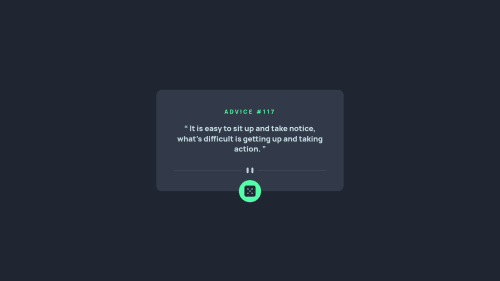Responsive Advice generator app

Solution retrospective
The Advice Slip API does not give random advice in firefox but works in chrome. It's either firefox bug of API bug not sure. I have also tried a little work around for this problem, checkout my script.js file of this project in Github Repo, The commented out lines . Any suggestions are very welcome. Thanks!
Please log in to post a comment
Log in with GitHubCommunity feedback
- @JoannaLapa
Hi Mohit kalme!
My congrats for finishing the challange!
Your problem makes me many troubles too, but I resolved it. The browser by default looks for a matching request in its HTTP cache. If there is a match and it is fresh, it will be returned from the cache- so it takes the previous advice. You can read more in this article on mdn https://developer.mozilla.org/en-US/docs/Web/API/Request/cache You can resolve it by adding {cache: no-cache} just after the URL address like below: const res = await fetch(API_ENDPOINT, {cache: no-cache});
I hope that it helps you!
Marked as helpful
Join our Discord community
Join thousands of Frontend Mentor community members taking the challenges, sharing resources, helping each other, and chatting about all things front-end!
Join our Discord